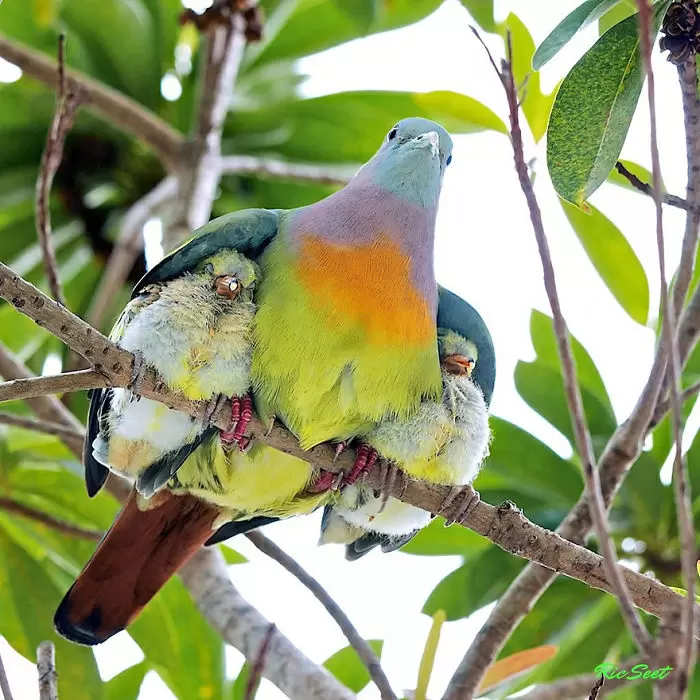
When political, economic, social, and environmental chaos swirls in the world around us, anxiety surges and our protective instinct is to “doom-scroll” or watch the news for hours, checking for the latest disaster. Our nervous system gets hijacked, we feel vulnerable and ask ourselves “Am I OK?”, “What should I DO?”, and “What’s going to happen next?” It’s hard to stay present—we’re either in the emotional past, or predicting a catastrophic future.
These turbulent times offer an opportunity to practice Presence, to notice when we become triggered and then patiently, continuously bring ourselves back to center: to grounding in the body, to stillness, wisdom, and our peaceful center within.
When you look at the photo of the Pink-necked Green Pigeon and her two baby chicks tucked under her wings, what do you see? The adult is completely focused, alert, still, balanced, and in her center. There is a power that emanates from this protective mother bird. She pulls her vulnerable young ones close to her body. Do you sense anxiety or peacefulness in this trio of birds?
This is exactly what we are called to do during times of great change, no matter what form the change takes. Allow the vulnerability, anxiety, fear, helplessness, anger, grief—any emotion that arises is welcome. “Pull the emotional part in close” to your body, place a hand over your heart and belly, breathe slowly to a count of 5, reassure the scared parts of you that you (your wise, centered self) are right there, like a rock, no matter what is happening in the outside world. Feel the innate peacefulness in your center, in your heart and belly.
This is the dance we are engaged in now, back and forth, to and fro, from triggered to peaceful, the old breaking down and revealing the new, unraveling and blossoming. We are called to greater healing and consciousness on every level—personal, relational, social, political, cultural, environmental, technological. And all change—negative or positive—causes anxiety because it pitches us over the cliff and into the unknown. Our old ways of being don’t serve us anymore, and our heart and soul is demanding that we grow and evolve, personally and collectively.
These are both frightening and exciting times to be alive, as we reshape and transform ourselves into the new—healing old trauma and fear, becoming more loving and conscious, discovering our authentic power and purpose.
This is all OK! It is human to get scared, triggered, terrified of the unknown, angry, overcome with grief. Allow it all, love yourself, and in the words of poet Anne Sexton, “Put your ear down close to your soul and listen hard”.
The river of life will carry you further along your sacred journey, and perhaps, even during tumultuous times, you will discover your birthright: a wellspring of joy, self-compassion, and peacefulness that abides no matter what chaos is spiraling around you.
(The Pink-necked Green Pigeon photo was taken by Ric Seet)
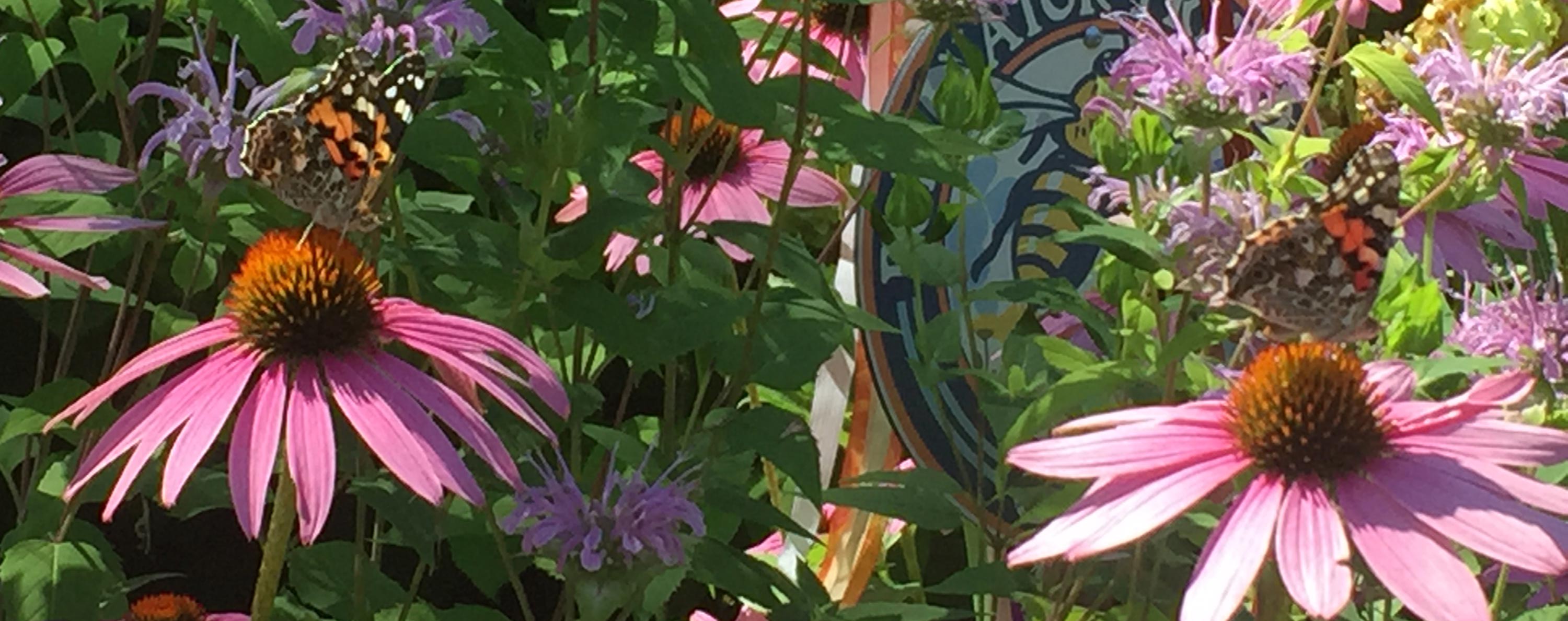
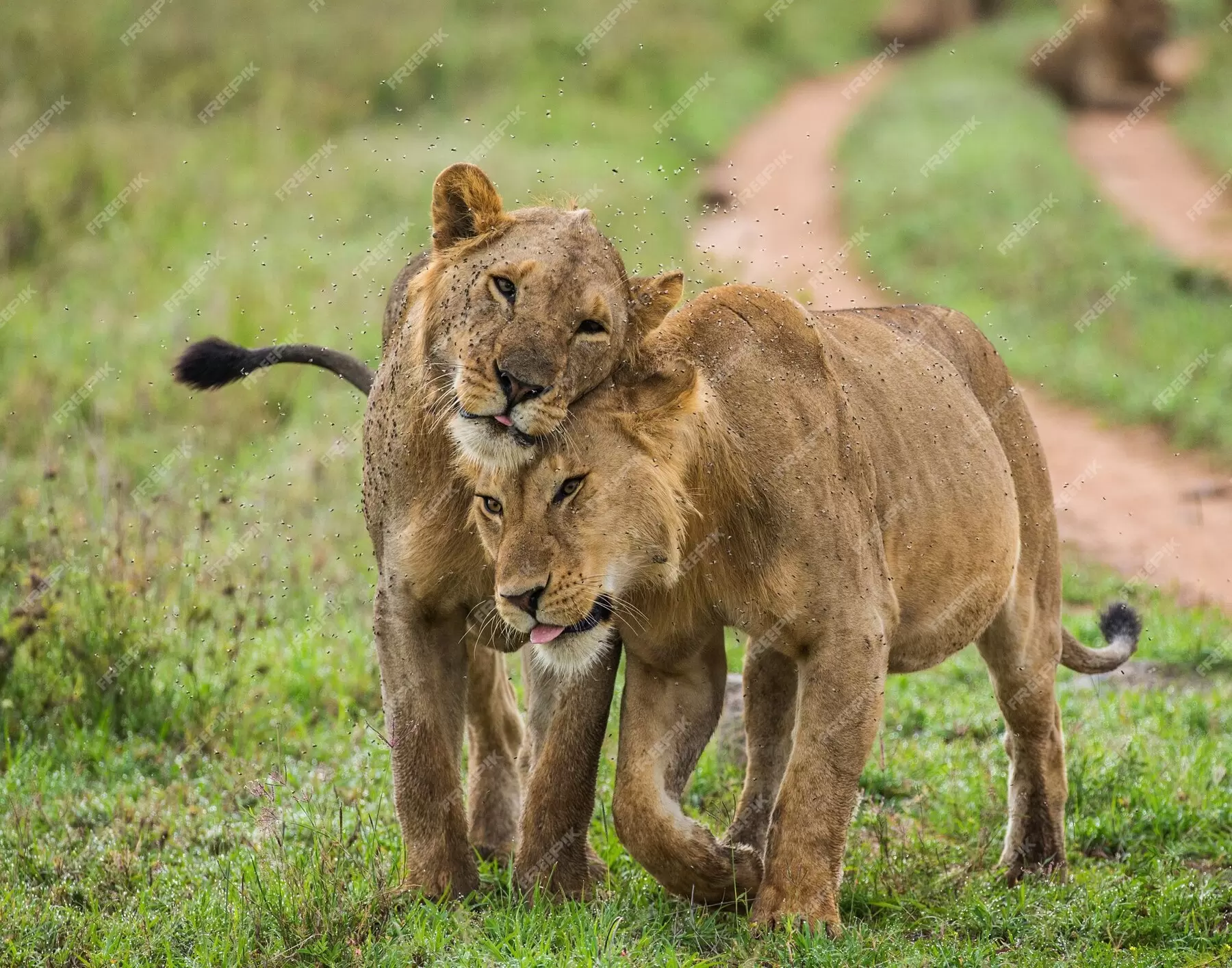 Political, racial, border, gender, and religious “divides” are just a few of the types of division we are hearing about in the media these days. We look to a political or spiritual leader to bring opposing factions together, to facilitate empathy and mutual understanding, but alas there is no one human being who can single-handedly stop the polarization that plagues us.
Political, racial, border, gender, and religious “divides” are just a few of the types of division we are hearing about in the media these days. We look to a political or spiritual leader to bring opposing factions together, to facilitate empathy and mutual understanding, but alas there is no one human being who can single-handedly stop the polarization that plagues us.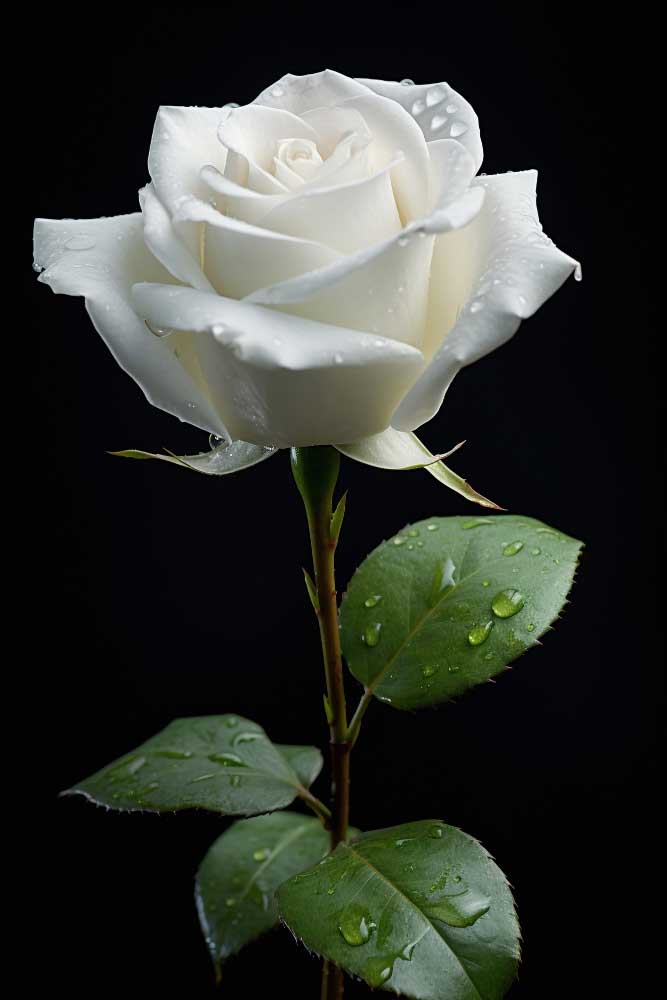 We are increasingly bombarded by news of devastating “weather events”; our hearts break for the people, animals, and forests that die or are displaced from their homes due to hurricanes, fires, and floods. We feel overwhelmed and helpless to be of any use other than to send donations toward relief efforts. How do we cope with the fact that as one client recently put it, “It seems like the whole world is on fire!”
We are increasingly bombarded by news of devastating “weather events”; our hearts break for the people, animals, and forests that die or are displaced from their homes due to hurricanes, fires, and floods. We feel overwhelmed and helpless to be of any use other than to send donations toward relief efforts. How do we cope with the fact that as one client recently put it, “It seems like the whole world is on fire!”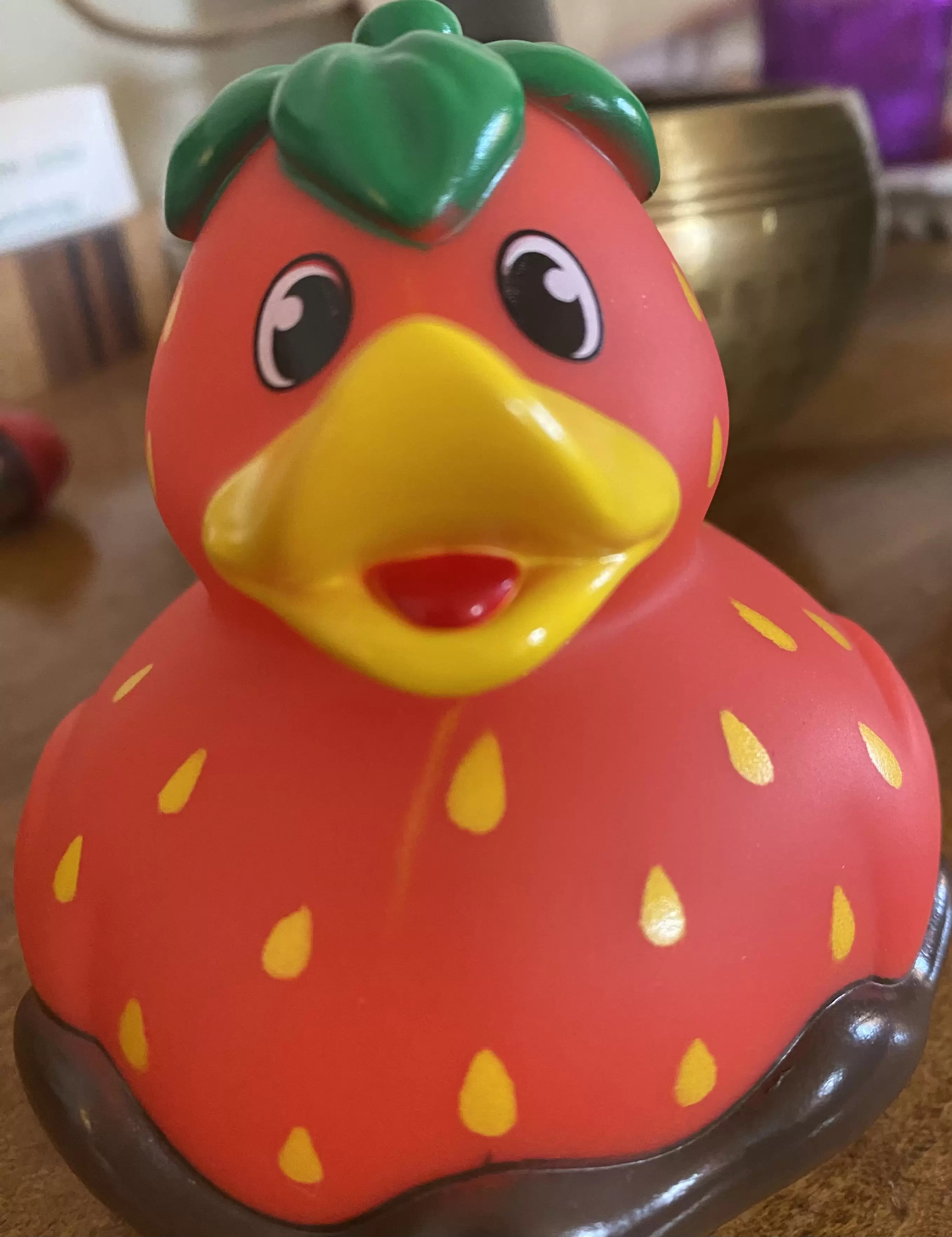 You might wonder if I’ve gone off my rocker. Rubber duckies can help you heal? Yes they certainly can! Many clients will attest that this form of trauma therapy can be beneficial for easing PTSD symptoms, healing the child within, and increasing self awareness of emotional states of being.
You might wonder if I’ve gone off my rocker. Rubber duckies can help you heal? Yes they certainly can! Many clients will attest that this form of trauma therapy can be beneficial for easing PTSD symptoms, healing the child within, and increasing self awareness of emotional states of being.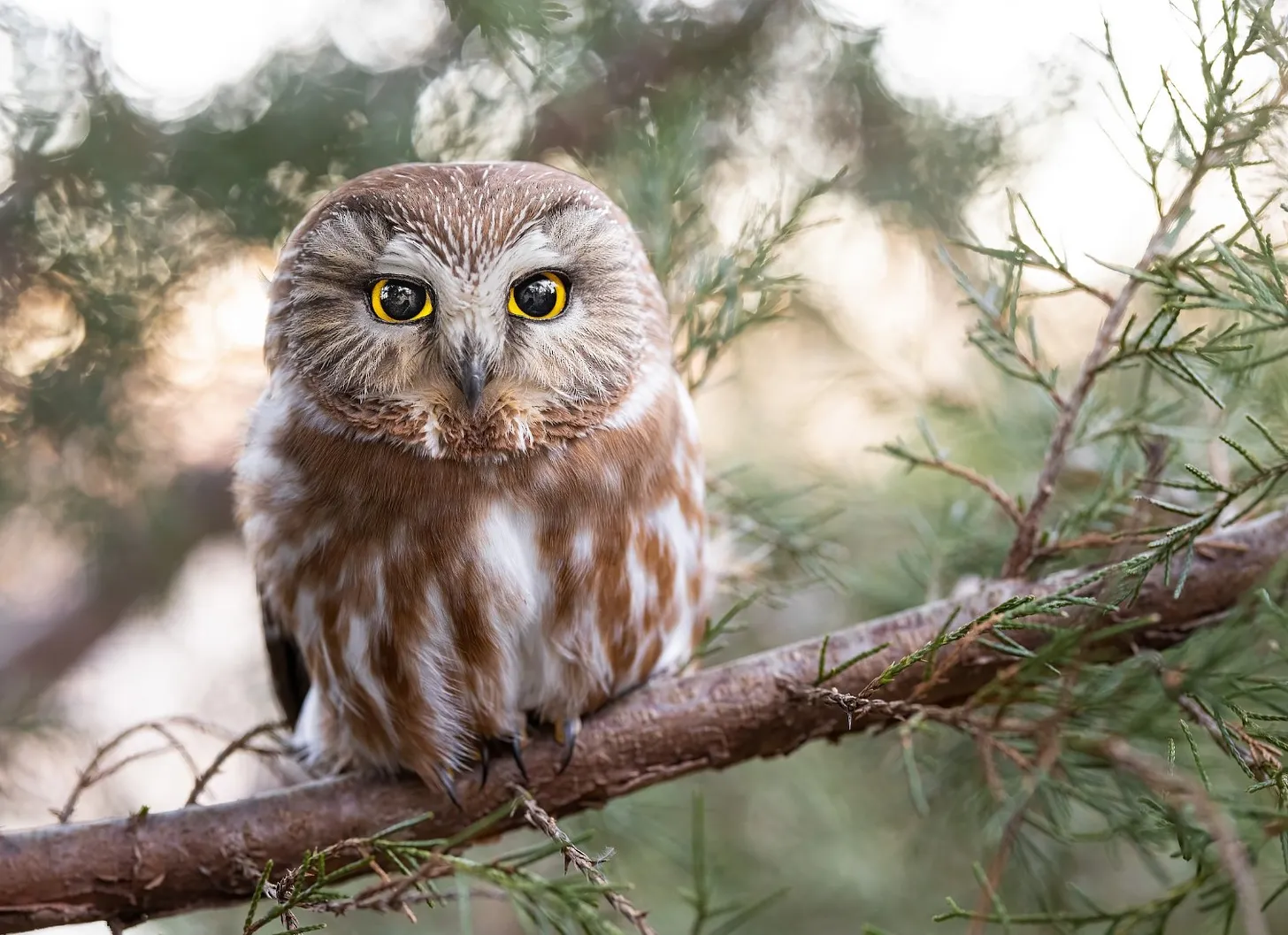 The new year is often launched with joy, exuberance, and fresh resolutions. We’re inspired to become a “new and improved” version of ourselves. Yet the rhythms of nature, and winter itself, teach us that winter is also a time of rest, stillness, and reflection. This piece by an unknown author invites us to light a candle and reflect upon the many threads of life we have woven together in the previous year.
The new year is often launched with joy, exuberance, and fresh resolutions. We’re inspired to become a “new and improved” version of ourselves. Yet the rhythms of nature, and winter itself, teach us that winter is also a time of rest, stillness, and reflection. This piece by an unknown author invites us to light a candle and reflect upon the many threads of life we have woven together in the previous year.